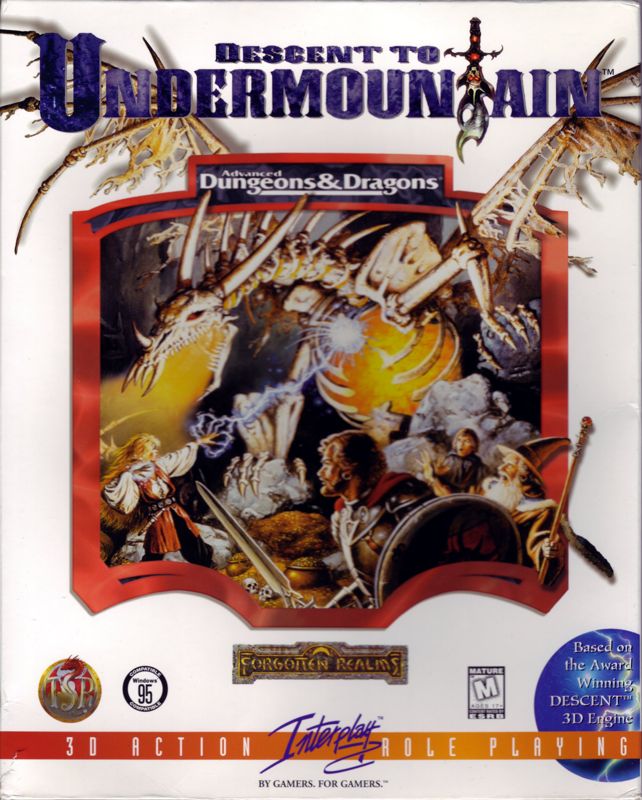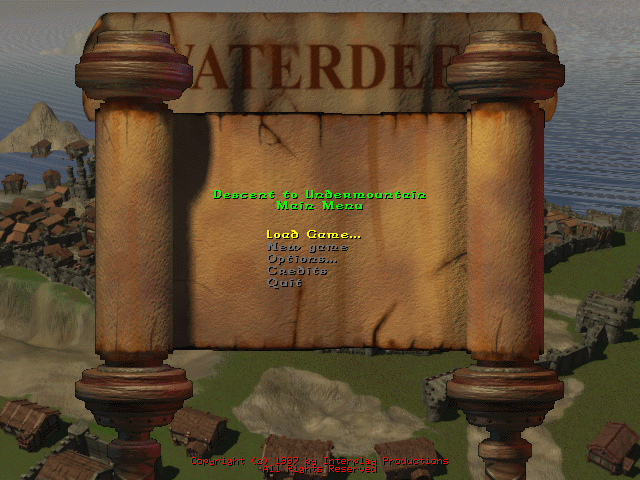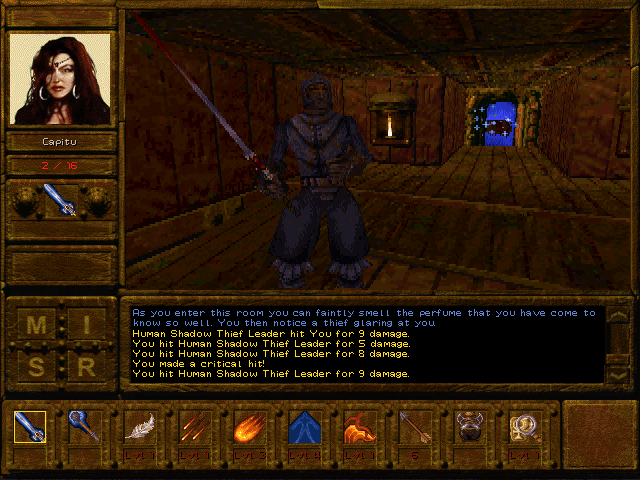Retro Replay Review
Gameplay
Descent to Undermountain drops players into the sprawling dungeon beneath Waterdeep, challenging them to piece together an ancient amulet and harness the Flame Sword of Lolth. From the moment you step into the maze-like corridors, the emphasis is on exploration and resource management. You’ll need to balance torchlight consumption against inventory space, all while solving environmental puzzles that guard the amulet fragments. This dynamic keeps every descent tense and rewarding, as even the smallest misstep can lead to disorientation or an ambush by lurking denizens of the deep.
The combat system leverages the AD&D rule set, offering turn-based encounters that reward tactical thinking over button-mashing. Each enemy type—from giant spiders to undead guardians—presents unique vulnerabilities that encourage experimentation with spells, ranged attacks, and melee maneuvers. Party composition is key: recruiting a balanced group of fighter, cleric, wizard, and rogue not only influences your effectiveness in battle but also unlocks alternative puzzle solutions, such as using divine magic to open sealed doors or lockpicking tools to bypass treacherous traps.
Exploration is further enriched by the Descent engine’s multi-level architecture. Verticality plays a surprising role, with hidden balconies, chasms that plunge into unknown depths, and secret passages accessible only by clever use of spells like Spider Climb. Mapping becomes a core gameplay loop—scrawling notes on your in-game journal helps you piece together clues about the amulet’s whereabouts. The satisfaction of uncovering a new chamber packed with lore or an armory filled with potent equipment adds a layer of discovery often missing in more linear dungeon crawlers.
Resource scarcity heightens the experience: healing potions, scrolls, and ammunition are rare, especially in the deeper levels of Undermountain. Every decision—whether to press onward in search of another amulet shard or retreat to the city to restock—has consequences. This careful pacing ensures that players remain fully engaged, constantly weighing risk versus reward as they inch closer to assembling the amulet and claiming the Flame Sword of Lolth.
Graphics
Built on the Descent engine, Descent to Undermountain delivers a surprisingly atmospheric visual presentation for its era. The dungeon’s stone walls are richly textured, each tile pattern evoking the sense of a centuries-old labyrinth carved from living rock. Subtle variations in lighting—from the flicker of your torch to the eerie glow of bioluminescent fungi—cast dynamic shadows that heighten the tension of every dungeon crawl.
Monster designs are equally memorable. Spiders skitter in hyper-realistic animation, their multiple legs moving in unsettling coordination, while specters fade in and out of view with ghostly translucence. The game’s palette leans into earthy tones—grays, browns, muted greens—broken occasionally by vibrant magic effects. Fireballs scorch the corridor walls with bright oranges and reds, and healing spells pulse in gentle blues and greens, offering visual markers that guide you through the darkness.
The level of detail extends to the user interface, which frames the 3D viewport with ornate AD&D-inspired borders. Inventory screens display weapons and armor as hand-drawn icons that reinforce the Forgotten Realms aesthetic. While modern players may find the resolution modest by today’s standards, the cohesive art direction ensures every area feels part of a unified subterranean world.
Performance is smooth on the intended hardware, with minimal loading times between sublevels. Occasional frame drops during large-scale battles are rare and never detract from the overall immersion. In sum, the graphics may not push polygon counts to the extreme, but they strike the perfect balance between functionality and atmosphere, drawing players deeper into Undermountain’s shadowy depths.
Story
The narrative premise of Descent to Undermountain hinges on a crisis in the city of Waterdeep. Citizens have begun vanishing without a trace, panic is spreading along the docks and marketplaces, and the city guard seems powerless to intervene. As an ambitious adventurer, you are hired by a secretive faction to descend beneath the streets and discover the fate of the missing. This setup immediately gives your mission personal stakes and a clear sense of urgency.
As you delve deeper, the plot unfolds through journal entries, cryptic carvings on dungeon walls, and intermittent dialogue with surviving captives. Each recovered amulet fragment reveals more about the Flame Sword of Lolth—a legendary weapon said to grant its wielder command over an endless army of infernal creatures. The game weaves this lore skilfully into environmental storytelling, with shrines dedicated to Lolth, blood-soaked altars, and chambers adorned with spider motifs hinting at the dark goddess’s influence.
Character interactions add further depth. Occasional party members voice concerns or moral quandaries about wielding such immense power, and you must choose whether to heed their warnings or press on regardless. These dialogues do not alter the main storyline drastically, but they enrich the emotional weight of your quest. By the final levels, retrieving all eight amulet pieces feels like more than just a fetch quest—it’s an epic journey to avert the city’s doom.
The climax, which sees you forging the completed amulet and confronting the final guardian of the Flame Sword, is staged in a grand cavern lit by pillars of perpetual flame. This finale rewards your perseverance with a cinematic reveal and a sweeping orchestral score that ties together the lore you’ve uncovered. Though the ending remains faithful to classic AD&D tropes, it offers satisfying closure and the promise of further adventures in the Forgotten Realms.
Overall Experience
Descent to Undermountain stands as a testament to ambitious dungeon-crawling in the AD&D universe. It merges methodical exploration, tactical combat, and rich lore into a cohesive package that appeals to both tabletop aficionados and fans of immersive 3D adventuring. The pacing allows for moments of quiet tension as you navigate dark corridors, interspersed with adrenaline-pumping encounters that test your party’s limits.
The learning curve can be steep, especially for players unfamiliar with Dungeons & Dragons mechanics. However, a comprehensive in-game manual, combined with contextual hints and tooltips, smooths the transition. Once you master spell preparation, party formation, and mapping strategies, the game opens up in unexpected ways, revealing multiple routes to each objective and secrets hidden in offshoot passages.
Replayability is baked into the design. Different character builds and dialogue choices offer fresh approaches to combat and puzzle-solving. Additionally, the branching dungeon paths encourage multiple playthroughs to uncover every amulet piece, rescue all captives, and discover hidden lore. Even after completing the main quest, side chambers brim with challenges that extend the game’s lifespan well beyond its initial 20-30 hour campaign.
Whether you crave the thrill of discovering a hidden treasure room or relish the satisfaction of outwitting a powerful dungeon lord, Descent to Undermountain delivers a robust, atmospheric RPG experience. It transports you into the heart of Forgotten Realms intrigue, demanding both brains and brawn to emerge victorious—and ensuring that Waterdeep’s fate rests firmly in your capable hands.
 Retro Replay Retro Replay gaming reviews, news, emulation, geek stuff and more!
Retro Replay Retro Replay gaming reviews, news, emulation, geek stuff and more!









Reviews
There are no reviews yet.